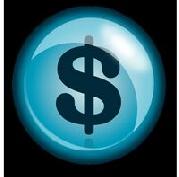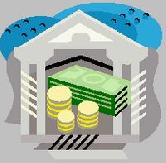
 |
|
| Financial Terms | |
| Blend off |
|
Information about financial, finance, business, accounting, payroll, inventory, investment, money, inventory control, stock trading, financial advisor, tax advisor, credit.
Main Page: inventory, stock trading, accounting, business, investment, payroll, financial advisor, inventory control, |
Definition of Blend off
Blend offThe reintroduction of a faulty product into a process production flow by
Related Terms:NPV (net present value of cash flows)Same as PV, but usually includes a subtraction for an initial cash outlay. PV (present value of cash flows)the value in today’s dollars of cash flows that occur in different time periods. Asset-backed securityA security that is collateralized by loans, leases, receivables, or installment contracts Back feeThe fee paid on the extension date if the buyer wishes to continue the option. Back officeBrokerage house clerical operations that support, but do not include, the trading of stocks and Back-to-back financingAn intercompany loan channeled through a bank. Back-to-back loanA loan in which two companies in separate countries borrow each other's currency for a  Back-up1) When bond yields and prices fall, the market is said to back-up. BackwardationA market condition in which futures prices are lower in the distant delivery months than in Best-efforts saleA method of securities distribution/ underwriting in which the securities firm agrees to sell Best-interests-of-creditors testThe requirement that a claim holder voting against a plan of reorganization Blanket inventory lienA secured loan that gives the lender a lien against all the borrower's inventories. Buy-backAnother term for a repo. Cash flowIn investments, it represents earnings before depreciation , amortization and non-cash charges. Cash flow after interest and taxesNet income plus depreciation. Cash flow coverage ratioThe number of times that financial obligations (for interest, principal payments,  Cash flow from operationsA firm's net cash inflow resulting directly from its regular operations Cash flow matchingAlso called dedicating a portfolio, this is an alternative to multiperiod immunization in Cash flow per common shareCash flow from operations minus preferred stock dividends, divided by the Cash flow time-lineLine depicting the operating activities and cash flows for a firm over a particular period. Cash-flow break-even pointThe point below which the firm will need either to obtain additional financing Corporate processing floatThe time that elapses between receipt of payment from a customer and the Days' sales in inventory ratioThe average number of days' worth of sales that is held in Inventory. Diffusion processA conception of the way a stock's price changes that assumes that the price takes on all Discounted cash flow (DCF)Future cash flows multiplied by discount factors to obtain present values. Discounted payback period ruleAn investment decision rule in which the cash flows are discounted at an Discretionary cash flowCash flow that is available after the funding of all positive NPV capital investment  Dividend clawbackWith respect to a project financing, an arrangement under which the sponsors of a project Equivalent annual cash flowAnnuity with the same net present value as the company's proposed investment. Expected future cash flowsProjected future cash flows associated with an asset of decision. Flower bondGovernment bonds that are acceptable at par in payment of federal estate taxes when owned by Flow-through basisAn account for the investment credit to show all income statement benefits of the credit Flow-through methodThe practice of reporting to shareholders using straight-line depreciation and Free cash flowsCash not required for operations or for reinvestment. Often defined as earnings before Gross domestic product (GDP)The market value of goods and services produced over time including the Gross national product (GNP)Measures and economy's total income. It is equal to GDP plus the income Incremental cash flowsDifference between the firm's cash flows with and without a project. InventoryFor companies: Raw materials, items available for sale or in the process of being made ready for Inventory loanA secured short-term loan to purchase Inventory. The three basic forms are a blanket Inventory turnoverThe ratio of annual sales to average Inventory which measures the speed that Inventory Investment product line (IPML)The line of required returns for investment projects as a function of beta In-house processing floatRefers to the time it takes the receiver of a check to process the payment and Just-in-time inventory systemsSystems that schedule materials/Inventory to arrive exactly as they are Limitation on sale-and-leasebackA bond covenant that restricts in some way a firm's ability to enter into Lookback optionAn option that allows the buyer to choose as the option strike price any price of the Mortgage-Backed Securities Clearing CorporationA wholly owned subsidiary of the Midwest Stock Mortgage-backed securitiesSecurities backed by a pool of mortgage loans. Nominal cash flowA cash flow expressed in nominal terms if the actual dollars to be received or paid out are given. Normal backwardation theoryHolds that the futures price will be bid down to a level below the expected Operating cash flowEarnings before depreciation minus taxes. It measures the cash generated from PaybackThe length of time it takes to recover the initial cost of a project, without regard to the time value of money. Plowback rateRelated: retention rate. Price discovery processThe process of determining the prices of the assets in the marketplace through the Price-specie-flow mechanismAdjustment mechanism under the classical gold standard whereby Product cycleThe time it takes to bring new and/or improved products to market. Product riskA type of mortgage-pipeline risk that occurs when a lender has an unusual loan in production or Production payment financingA method of nonrecourse asset-based financing in which a specified Production-flow commitmentAn agreement by the loan purchaser to allow the monthly loan quota to be Real cash flowA cash flow is expressed in real terms if the current, or date 0, purchasing power of the cash Sale and lease-backSale of an existing asset to a financial institution that then leases it back to the user. Scheduled cash flowsThe mortgage principal and interest payments due to be paid under the terms of the Small-firm effectThe tendency of small firms (in terms of total market capitalization) to outperform the Small issues exemptionSecurities issues that involve less than $1.5 million are not required to file a Statement of cash flowsA financial statement showing a firm's cash receipts and cash payments during a Statement-of-cash-flows methodA method of cash budgeting that is organized along the lines of the statement of cash flows. Stripped mortgage-backed securities (SMBSs)Securities that redistribute the cash flows from the Swap buy-backThe sale of an interest rate swap by one counterparty to the other, effectively ending the swap. Tax clawback agreementAn agreement to contribute as equity to a project the value of all previously WallflowerStock that has fallen out of favor with investors; tends to have a low P/E (price to earnings ratio). CASH-FLOW STATEMENTA statement that shows where a company’s cash came from and where it went for a period of time, such as a year. CASH FLOWS FROM FINANCING ACTIVITIESA section on the cash-flow statement that shows how much cash a company raised by selling stocks or bonds this year and how much was paid out for cash dividends and other finance-related obligations. CASH FLOWS FROM INVESTING ACTIVITIESA section on the cashflow statement that shows how much cash came in and went out because of various investing activities like purchasing machinery. CASH FLOWS FROM OPERATIONSA section on the cash-flow Stockholders’ equity statement that shows how much cash came into a company and how much went out during the normal course of business. INVENTORY TURNOVERThe number of times a company sold out and replaced its average stock of goods in a year. The formula is: MERCHANDISE INVENTORYThe value of the products that a retailing or wholesaling company intends to resell for a profit. UNITS OF PRODUCTIONA depreciation method that relates a machine’s depreciation to the number of units it makes each Cash Flow statementA financial report that shows the movement in cash for a business during an accounting period. Discounted cash flow (DCF)A method of investment appraisal that discounts future cash flows to present value using a discount rate, which is the risk-adjusted cost of capital. FeedbackThe retrospective process of measuring performance, comparing it with plan and taking corrective action. InventoryGoods bought or manufactured for resale but as yet unsold, comprising raw materials, work-in-progress and finished goods. Non-production overheadA general term referring to period costs, such as selling, administration and financial expenses. PaybackA method of investment appraisal that calculates the number of years taken for the cash flows from an investment to cover the initial capital outlay. Process costingA method of costing for continuous manufacture in which costs for an accounting compared are compared with production for the same period to determine a cost per unit produced. Product costThe cost of goods or services produced. Product marketA business’s investment in technology, people and materials in order to make, buy and sell products or services to customers. Product/service mixSee sales mix. Production overheadA general term referring to indirect costs. InventoryThe cost of the goods that a company has available for resale. Periodic inventory systemAn Inventory system in which the balance in the Inventory account is adjusted for the units sold only at the end of the period. Perpetual inventory systemAn Inventory system in which the balance in the Inventory account is adjusted for the units sold each time a sale is made. Statement of Cash FlowsOne of the basic financial statements; it lists the cash inflows and cash outflows of the company, grouped into the categories of operating activities, financing activities, and investing activities. The Statement of Cash flows is prepared for a specified period of time. cash flowAn obvious but at the same time elusive term that refers to cash cash flow from operating activities, or cash flow from profitThis equals the cash inflow from sales during the period minus the cash statement of cash flowsOne of the three primary financial statements discounted cash flow (DCF)Refers to a capital investment analysis technique free cash flowGenerally speaking, this term refers to cash flow from inventory shrinkageA term describing the loss of products from Inventory inventory turnover ratioThe cost-of-goods-sold expense for a given inventory write-downRefers to making an entry, usually at the close of a negative cash flowThe cash flow from the operating activities of a business Related to : financial, finance, business, accounting, payroll, inventory, investment, money, inventory control, stock trading, financial advisor, tax advisor, credit. |